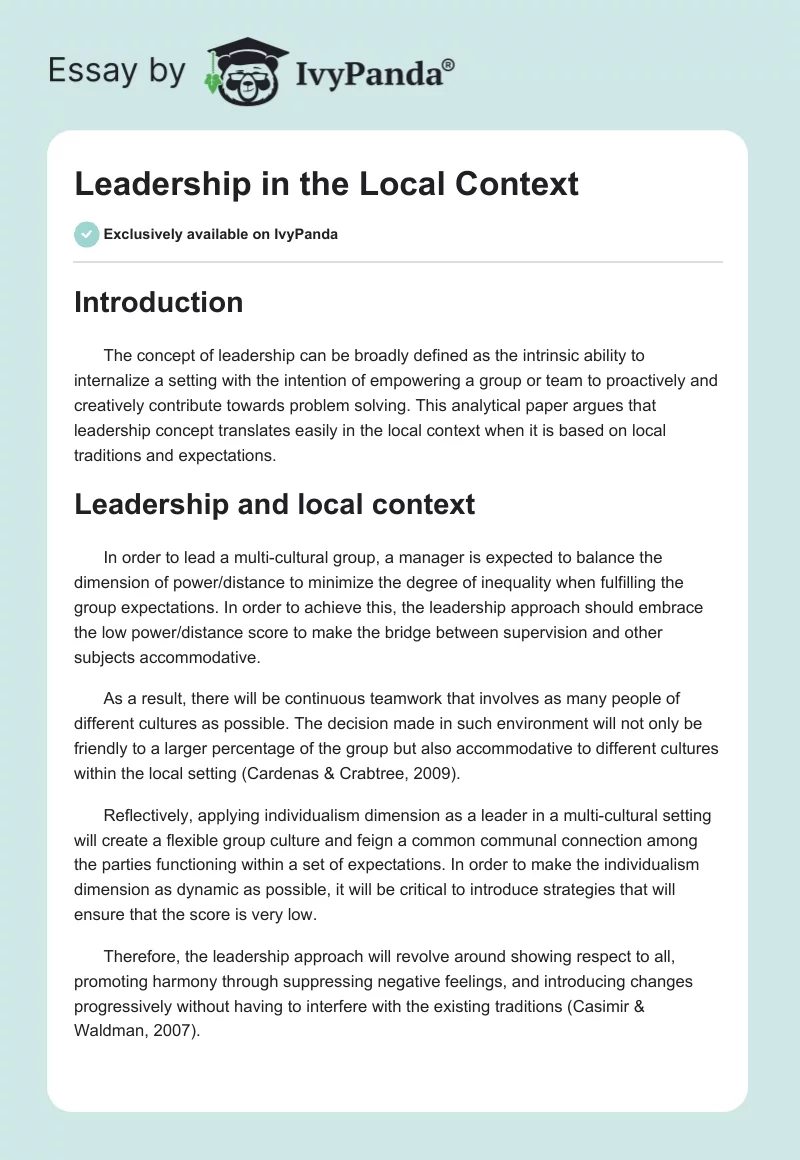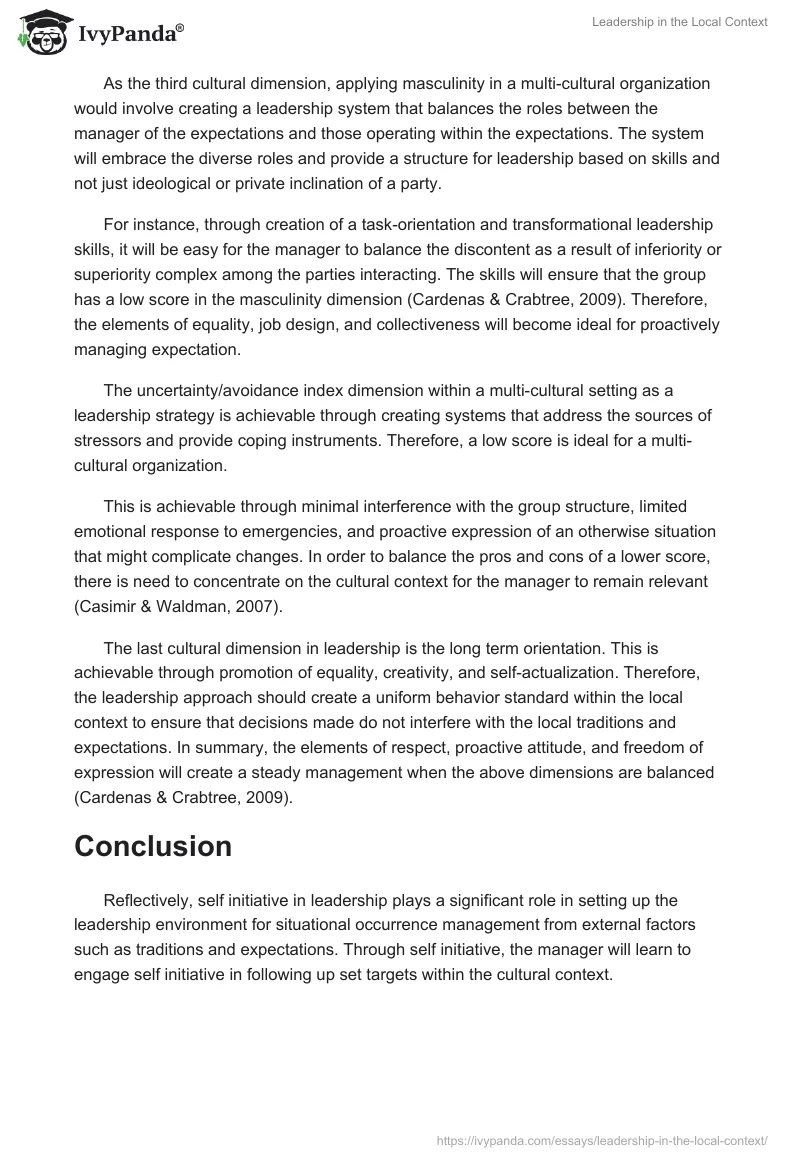Introduction
The concept of leadership can be broadly defined as the intrinsic ability to internalize a setting with the intention of empowering a group or team to proactively and creatively contribute towards problem solving. This analytical paper argues that leadership concept translates easily in the local context when it is based on local traditions and expectations.
Leadership and local context
In order to lead a multi-cultural group, a manager is expected to balance the dimension of power/distance to minimize the degree of inequality when fulfilling the group expectations. In order to achieve this, the leadership approach should embrace the low power/distance score to make the bridge between supervision and other subjects accommodative.
As a result, there will be continuous teamwork that involves as many people of different cultures as possible. The decision made in such environment will not only be friendly to a larger percentage of the group but also accommodative to different cultures within the local setting (Cardenas & Crabtree, 2009).
Reflectively, applying individualism dimension as a leader in a multi-cultural setting will create a flexible group culture and feign a common communal connection among the parties functioning within a set of expectations. In order to make the individualism dimension as dynamic as possible, it will be critical to introduce strategies that will ensure that the score is very low.
Therefore, the leadership approach will revolve around showing respect to all, promoting harmony through suppressing negative feelings, and introducing changes progressively without having to interfere with the existing traditions (Casimir & Waldman, 2007).
As the third cultural dimension, applying masculinity in a multi-cultural organization would involve creating a leadership system that balances the roles between the manager of the expectations and those operating within the expectations. The system will embrace the diverse roles and provide a structure for leadership based on skills and not just ideological or private inclination of a party.
For instance, through creation of a task-orientation and transformational leadership skills, it will be easy for the manager to balance the discontent as a result of inferiority or superiority complex among the parties interacting. The skills will ensure that the group has a low score in the masculinity dimension (Cardenas & Crabtree, 2009). Therefore, the elements of equality, job design, and collectiveness will become ideal for proactively managing expectation.
The uncertainty/avoidance index dimension within a multi-cultural setting as a leadership strategy is achievable through creating systems that address the sources of stressors and provide coping instruments. Therefore, a low score is ideal for a multi-cultural organization.
This is achievable through minimal interference with the group structure, limited emotional response to emergencies, and proactive expression of an otherwise situation that might complicate changes. In order to balance the pros and cons of a lower score, there is need to concentrate on the cultural context for the manager to remain relevant (Casimir & Waldman, 2007).
The last cultural dimension in leadership is the long term orientation. This is achievable through promotion of equality, creativity, and self-actualization. Therefore, the leadership approach should create a uniform behavior standard within the local context to ensure that decisions made do not interfere with the local traditions and expectations. In summary, the elements of respect, proactive attitude, and freedom of expression will create a steady management when the above dimensions are balanced (Cardenas & Crabtree, 2009).
Conclusion
Reflectively, self initiative in leadership plays a significant role in setting up the leadership environment for situational occurrence management from external factors such as traditions and expectations. Through self initiative, the manager will learn to engage self initiative in following up set targets within the cultural context.
References
Cardenas, J., & Crabtree, G. (2009). Making time for visionary leadership. College and University, 84(3), 59-63.
Casimir, G., & Waldman, D. A. (2007). A cross cultural comparison of the importance of leadership traits for effective low-level and high-level leaders: Australia and China. International Journal of Cross Cultural Management, 7(1), 47-61.


